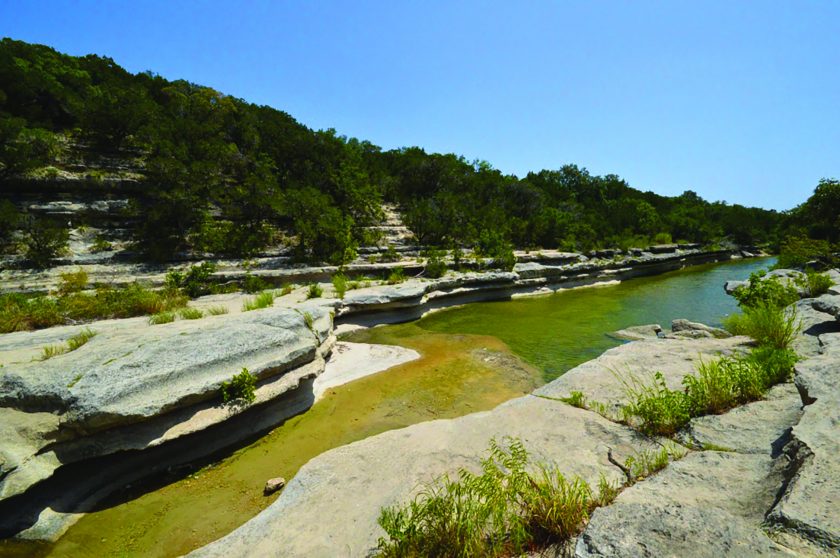Leaking Pipes Feeding Austin Watershed
November 12, 2020

If it weren’t for leaky city pipes and irrigation, it’s possible that less water would be flowing through popular Austin swimming holes.
Research from the Jackson School of Geosciences has found that in urbanized areas, much of the water that flows through Bull Creek — which feeds Bull Creek District Park and St. Edward’s Park swimming holes — can be traced to municipal sources, such as sprinkler runoff and leakage from municipal water and wastewater pipes.
“That means if you turned off all the leakage and the irrigation, then some urbanized regions of Bull Creek and its tributary channels would lose a large amount of stream flow, more than 50% during non-rainstorm conditions,” said lead author Lakin Beal, who conducted the research while earning a master’s degree at the Jackson School. She is now a hydrogeologist at INTERA Inc.
The study was published in the journal Water Resources Research in February 2020 and is part of UT’s Planet Texas 2050 initiative, which looks to Texas research as a model for solving environmental challenges facing the globe.
The findings raise concern about water quality in the watershed over time. Elevated sodium and chloride concentrations in urban areas suggest that wastewater is reaching the stream and spring water that flows naturally through the watershed.
The results also showcase a promising new geochemical technique that could help other cities learn more about their watersheds, said co-author Jay Banner, a professor in the Department of Geological Sciences.
“To recognize that the municipal water is getting out there, that’s not a surprise because every city is leaking. But what is novel is the way we are able to chemically identify it and track how it changes,” said Banner, who is also director of UT’s Environmental Science Institute and an organizer of Planet Texas 2050.
The scientists were able to distinguish municipal water from natural water by looking for differences in the isotope signatures of strontium in the urban stream and spring water. Strontium is a trace element found naturally in Austin’s underlying limestone bedrock, with the strontium from Austin’s municipal water supply, which comes from the Highland Lakes, having an isotope signature different from that of the local groundwater.
The study points out other areas where water interacts with bedrock geology that has a distinctive chemical signature — such as St. Louis, Missouri, and Spokane, Washington — as good candidates for applying the technique.
“That underscores what the goal of the Planet Texas 2050 project is about,” Banner said. “We want our results to be transferable.”
Back to the Newsletter